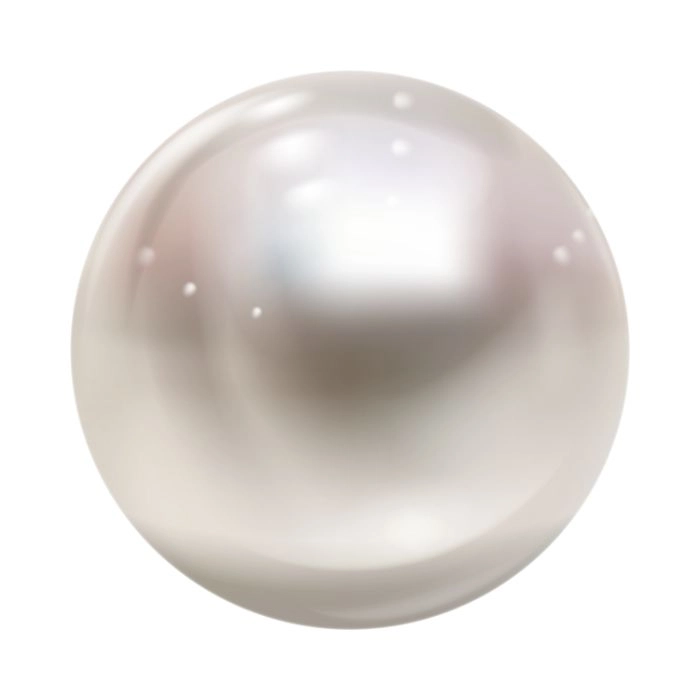During the JOYA Haute Joaillerie Festival held in Monaco in November 2024, we had the privilege to delve into the captivating world of natural pearls. Sponsored by the illustrious Van Cleef & Arpels, the event featured a comprehensive exploration of pearls from various perspectives: scientific, historical, geographical, and cultural.
Table of Contents
Here’s our take on the enduring fascination with natural pearls and their significance:
1. The Science Behind Natural Pearls
Under a microscope, natural pearls reveal a complex and mesmerizing structure. They are composed of concentric layers of aragonite and conchiolin, arranged in a crystalline form. These layers reflect light in a unique way, giving pearls their lustrous iridescence, known as nacre.
Pearls form inside mollusks when an irritant, such as a grain of sand or a parasite, enters the shell. The mollusk secretes layers of nacre to protect itself, eventually forming a pearl. This organic process distinguishes natural pearls from their synthetic counterparts.

Fun Fact: The molecular arrangement of nacre gives each pearl its distinctive glow and unique beauty.
2. The Historical Significance of Pearls
The allure of pearls dates back thousands of years. Some key historical highlights include:
- Persian Gulf Discovery: The earliest pearls were harvested from the Persian Gulf, treasured for their rarity and perfection.
- Imperial India: Pearls symbolized wealth and power, famously adorning the robes of Indian emperors.
- European Royalty: During the Renaissance, pearls were considered the ultimate status symbol, reserved exclusively for royalty and the nobility.
Visual Inspiration:
- A striking portrait of Mughal Emperor Jahangir, draped in layers of pearls, illustrates the opulence associated with natural pearls.
- Iconic figures like Marie Antoinette also wore pearls as an expression of timeless elegance.
3. The Evolution of Cultured Pearls
The development of cultured pearls began in Japan during the late 19th century, pioneered by Kokichi Mikimoto. These pearls brought the beauty of pearls to a broader audience by replicating the natural formation process in a controlled environment.
Today, pearls are categorized into three main types:
- Natural Pearls: Extremely rare and formed without human intervention.
- Cultured Pearls: Grown with human assistance by inserting a nucleus into the mollusk.
- Synthetic Pearls: Fully manufactured using artificial materials.
Freshwater vs. Saltwater Pearls: What You Need to Know
When choosing pearls, the type of water they originate from significantly impacts their beauty, durability, and value. Here’s a quick comparison:

Origin
- Freshwater Pearls: Grown in lakes, rivers, and ponds, primarily in China. Each mussel can produce multiple pearls at a time.
- Saltwater Pearls: Cultivated in oceans, typically in oysters. Famous varieties include Akoya, Tahitian, and South Sea pearls.
Shape and Size
- Freshwater Pearls: Known for their wide variety of shapes and colors, but are less likely to be perfectly round.
- Saltwater Pearls: Tend to be more uniform in shape and larger, with a luminous sheen.
Luster
- Freshwater Pearls: Softer, satiny luster, suitable for casual and artistic jewelry designs.
- Saltwater Pearls: High luster and mirror-like reflection, ideal for luxurious and classic pieces.
Durability
- Freshwater Pearls: Thicker nacre layers make them less prone to chipping.
- Saltwater Pearls: More delicate, as they have thinner nacre but offer superior brilliance.
Price
- Freshwater Pearls: More affordable due to higher availability.
- Saltwater Pearls: Pricier because of their rarity and the time-intensive cultivation process.
Environmental Factors
Freshwater pearls are often considered more environmentally friendly since freshwater cultivation generally has a lower ecological impact compared to large-scale saltwater pearl farming.
Pro Tip:
If you’re looking for a perfect blend of luster and value, consider Akoya pearls, which are saltwater pearls celebrated for their luminous glow. For more unique shapes and vibrant hues, freshwater pearls might be your go-to.
5. The Calessia Jewelry Pearl Collection
At Calessia Jewelry, we specialize in natural Akoya pearls, crafted into exquisite designs using 18K pure gold.
Explore our featured pearl set here: The Gold Pearl Jewelry Set.

Final Thoughts: The Legacy of Natural Pearls
From their organic formation to their rich history, natural pearls continue to captivate us with their beauty and significance. They are a testament to the wonders of nature and a symbol of timeless elegance. Whether you’re drawn to their scientific marvel, historical relevance, or sheer aesthetic appeal, pearls are truly one of nature’s most extraordinary gifts.
